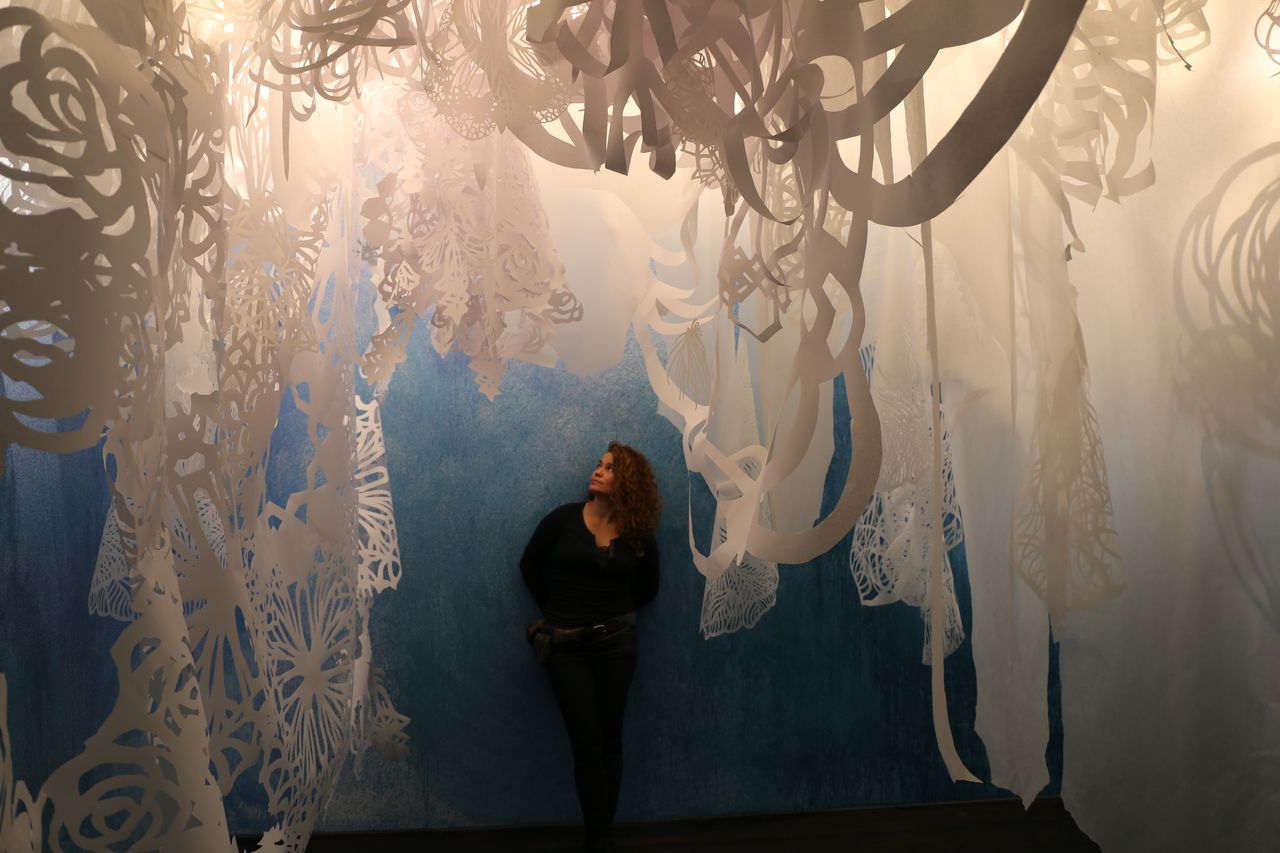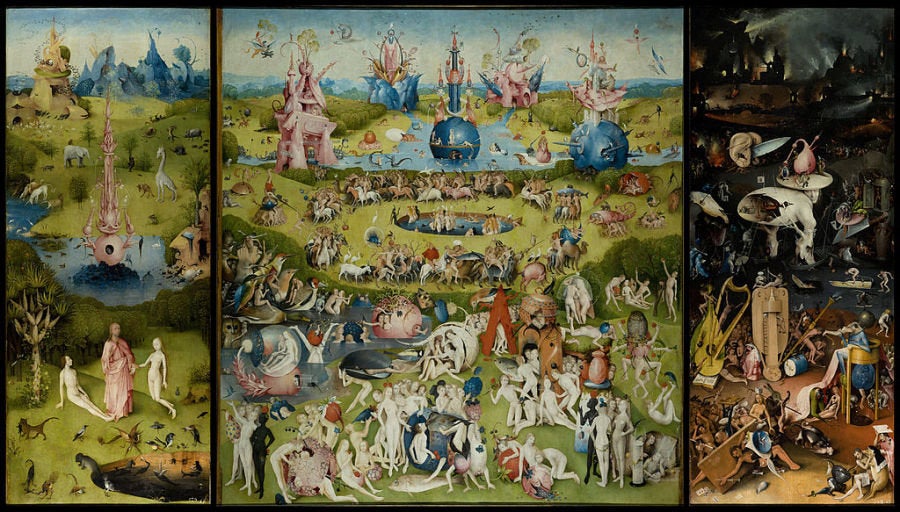Since the 1800s, people have reported experiencing loved ones’ deaths almost psychically, feeling that they, too, were moving into the beyond.
This phenomenon, which has gained anecdotal support from people around the world regardless of background or religious belief, is often referred to as a “shared-death experience” or “empathic death experience.”
Empathic death experiences don’t always look or feel the same, though similarities between individuals’ accounts help sketch a vague outline of events. The light at the end of the tunnel, for example ― now a hackneyed image associated with the sensation of dying ― originated from the testimonies of people who had undergone near-death or shared-death experiences.
Brooklyn-based artist Caledonia Curry, better known as Swoon, was not familiar with reports of shared-death experiences. That is, until she lived one.
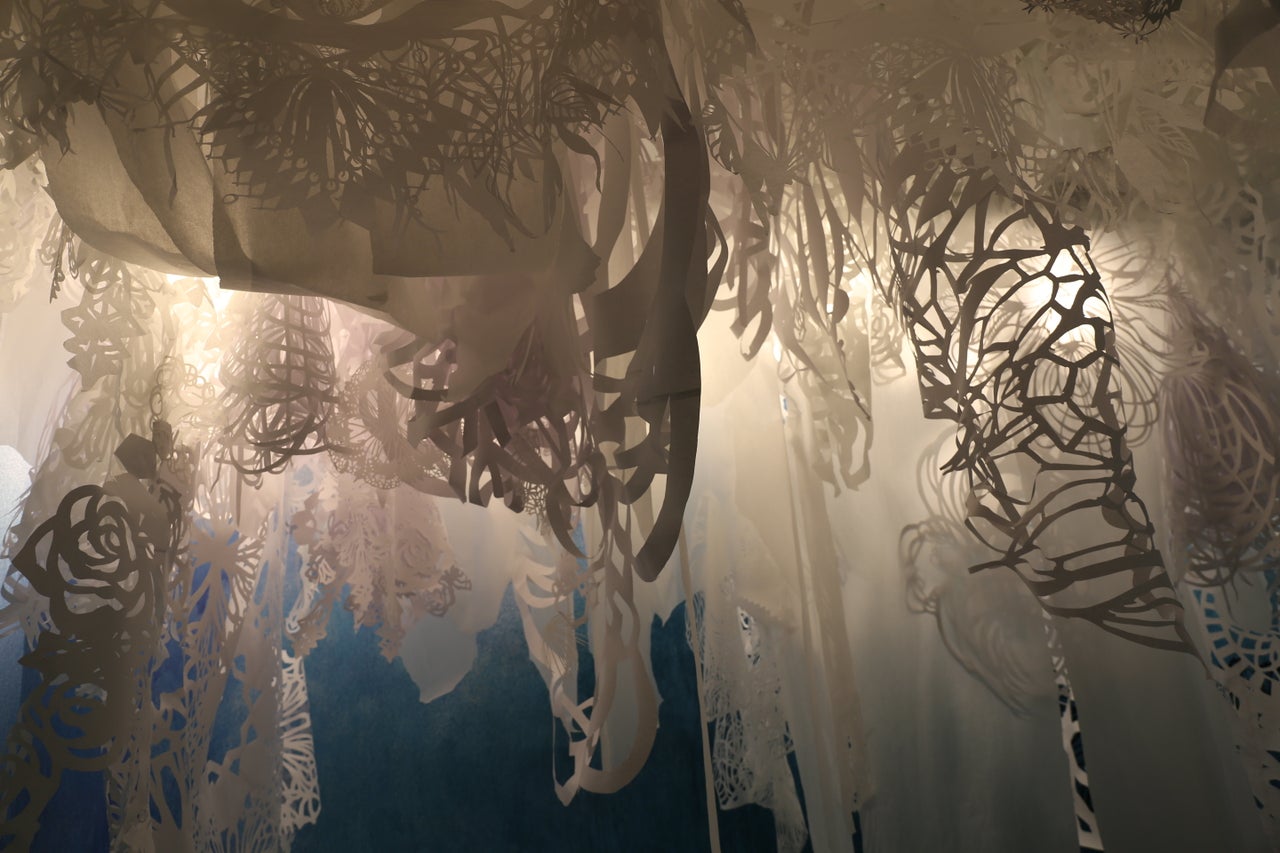
In an interview with The Huffington Post, the artist described an almost paranormal experience. Her mother, she said, had been sick for months, and Swoon had spent a great deal of time at her bedside caring for her. One evening in 2013, Swoon claims she heard her mother’s voice, felt her very presence, even though they weren’t in the same state.
“I was having really intense dreams about her the whole morning,” Swoon explained. “I kept waking up and falling back asleep. At one point, I thought I was awake and looked out the window. I saw a bunch of snow falling and I thought, ‘Wow, snow in June. That can’t be good.’”
From there, the experience only grew more surreal. “I opened the window, and the snow started to come through my body, transforming into points of light that bloomed into these intricate snow blossoms. I heard my mom’s voice talking to me, and I was filled with a very profound sense of wellbeing and love. I woke up weeping, my face covered in tears. I thought, I think that was my mom dying. My sister called a few hours later.”
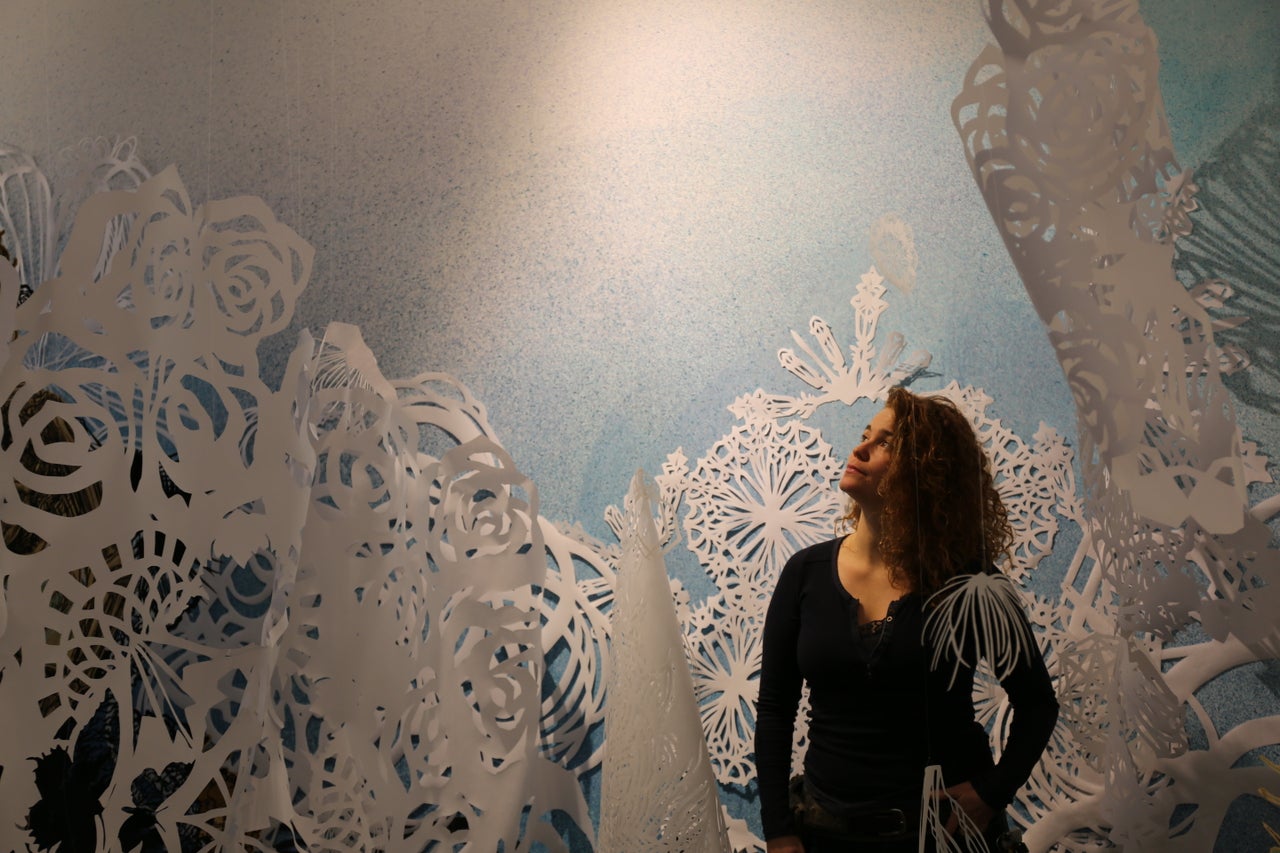
Swoon had experienced dreams before that she says could be described as prescient. Mostly, however, they were “subtle, little events” ― parallels that might raise an eyebrow but could be shrugged off with the morning’s coffee. This experience was something more powerful and impossible to shake.
Even after the evening of her mother’s passing, the sensation lingered. “I had this feeling of a little buoy inside me. I felt held. I couldn’t grieve as much as I expected because I had all this love and light inside me. It makes you question your sanity.”
The intensity of that feeling ― almost as if she were possessed ― compelled Swoon to do some research. “You don’t want to feel crazy,” she said. It wasn’t long before she discovered that her abnormal experience wasn’t actually all that abnormal. “It’s not a common phenomenon, but it does happen,” she added. “Sometimes, when someone very close to you dies ― a family member or friend ― you will share part of their dying experience.”
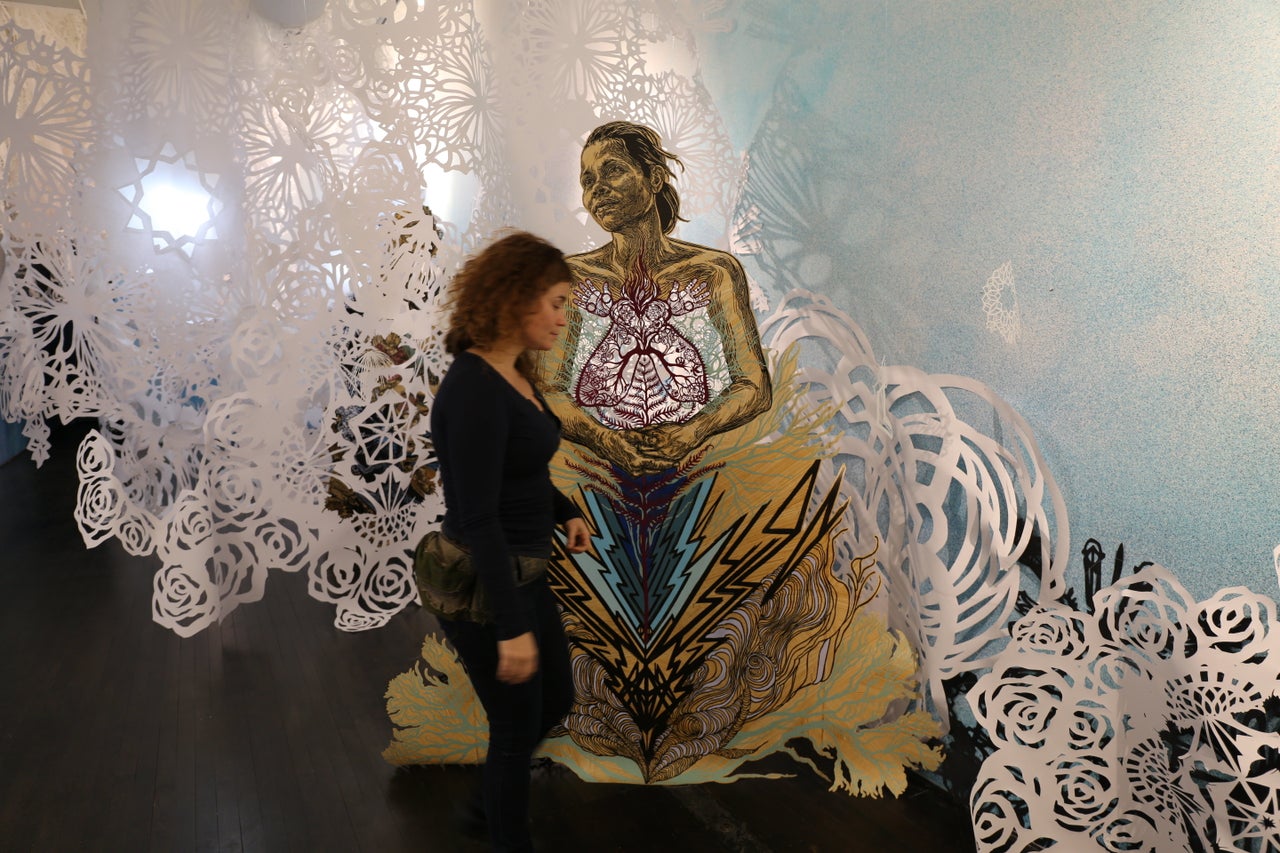
Stories like Swoon’s are sprinkled across the internet, from Reddit sub-pages like r/empathic to articles on Salon and CNN to websites like PeacefulSoulTransition.com and SharedCrossing.com.
In 2012, psychiatrist Raymond Moody compiled some of the most common impressions of those who claimed to have felt a loved one’s passing. Their stories involve rooms changing shape, dying people communicating telepathically, bystanders leaving their bodies and witnessing another dimension, becoming engulfed by a bright light that feels like love, and visions of accompanying a dying person through a tunnel towards a great light where they often pass by deceased loved ones.
“The core elements of my experience were described by others,” Swoon said. “As a visual artist, to have people telling these stories, describing this stuff that is so beautiful ― the light and tunnels and meadows and magical places ― I couldn’t resist.”
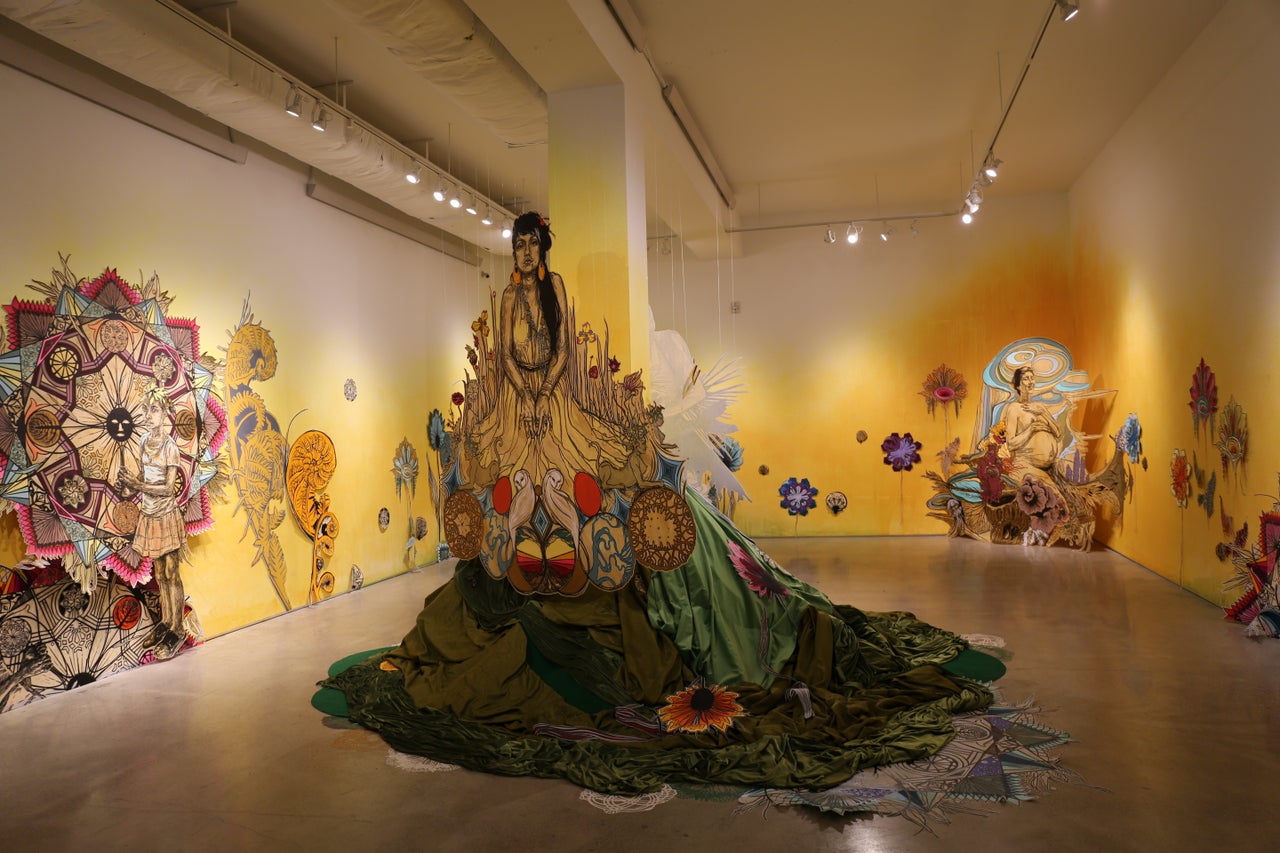
This week, Swoon’s most recent exhibition, “The Light After,” went on view at Detroit’s sprawling 2,500-square-foot Library Street Collective gallery. It invites viewers to share the otherworldly experience of inhabiting the space between life and death.
“The stories, they were just so beautiful,” Swoon said, describing the various accounts of empathic death experience she encountered during her research. “I would hear people describing these things and just started writing down what kept coming up.”
The site-specific installation, inspired by Swoon’s vision of snow blossoms, features hundreds of hand-cut paper and Mylar flowers, draped from floor to ceiling so the space resembles a snow-capped forest canopy in a lived fairy tale. Swoon operates in her usual aesthetic, where mythology meets the streets, though her usual activist ideology is replaced by a more spiritual verve.
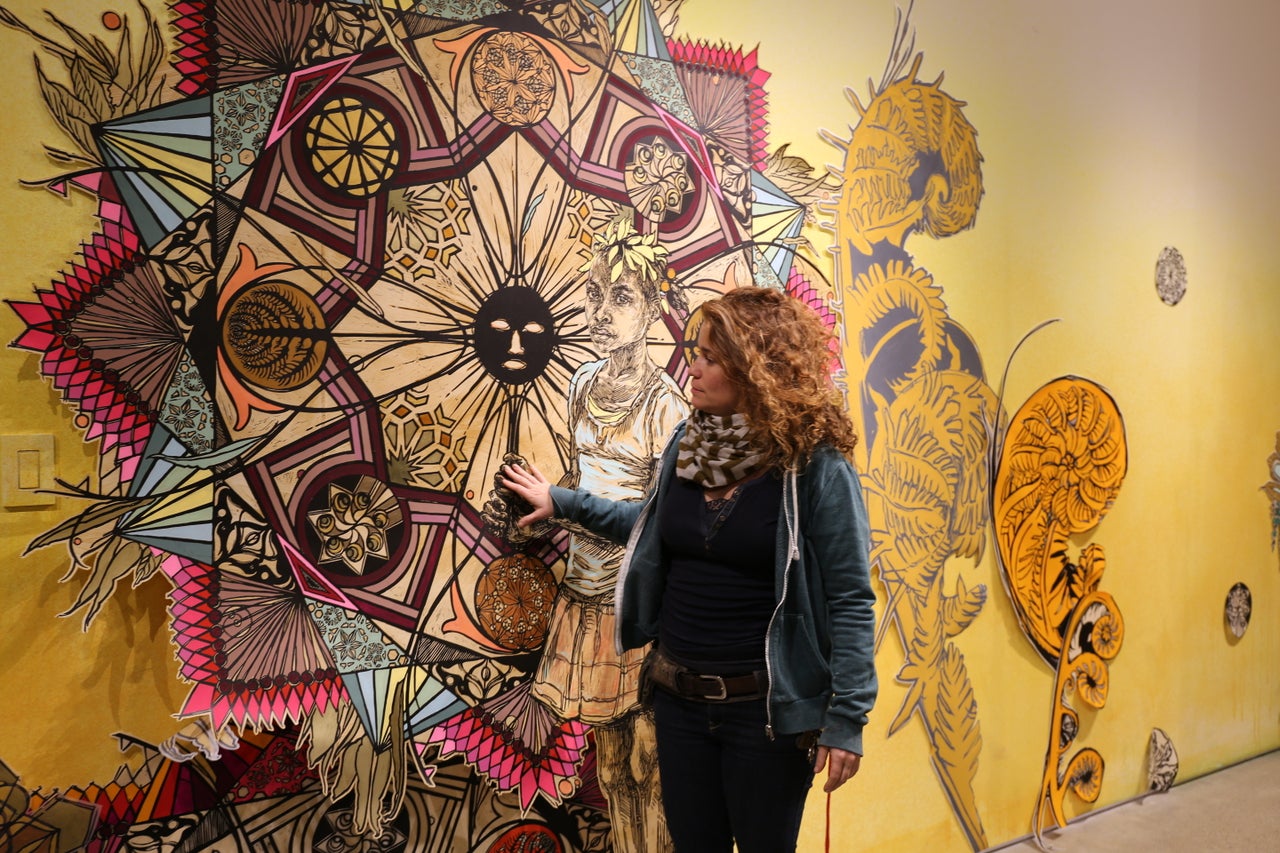
Viewers are swallowed whole in the immersive environment ― formerly a vacuum factory ― which takes the shape of a dark vortex that leads into an open meadow, mirroring the proverbial “light at the end of the tunnel.” As individuals walk through the tunnel, they are greeted by Swoon’s signature paper cutouts, renderings of people representing the loved ones there to welcome the deceased into the beyond.
Swoon hopes that the exhibition, which visualizes the experience of dying as one bursting with light and love, will change the way people think about death, or at least open their minds to visions beyond the norm. “As a culture, I think, we’re pretty death phobic,” she said. “When people do talk about death it’s always quite morbid. Even museums about death often revolve around oddities and the grotesque. I wanted to examine death from a totally different perspective.”
“I’m not talking about an afterlife, but the experience of dying,” she concluded. “It feels like, from the people who have experienced it, something beautiful, not something to fear.”
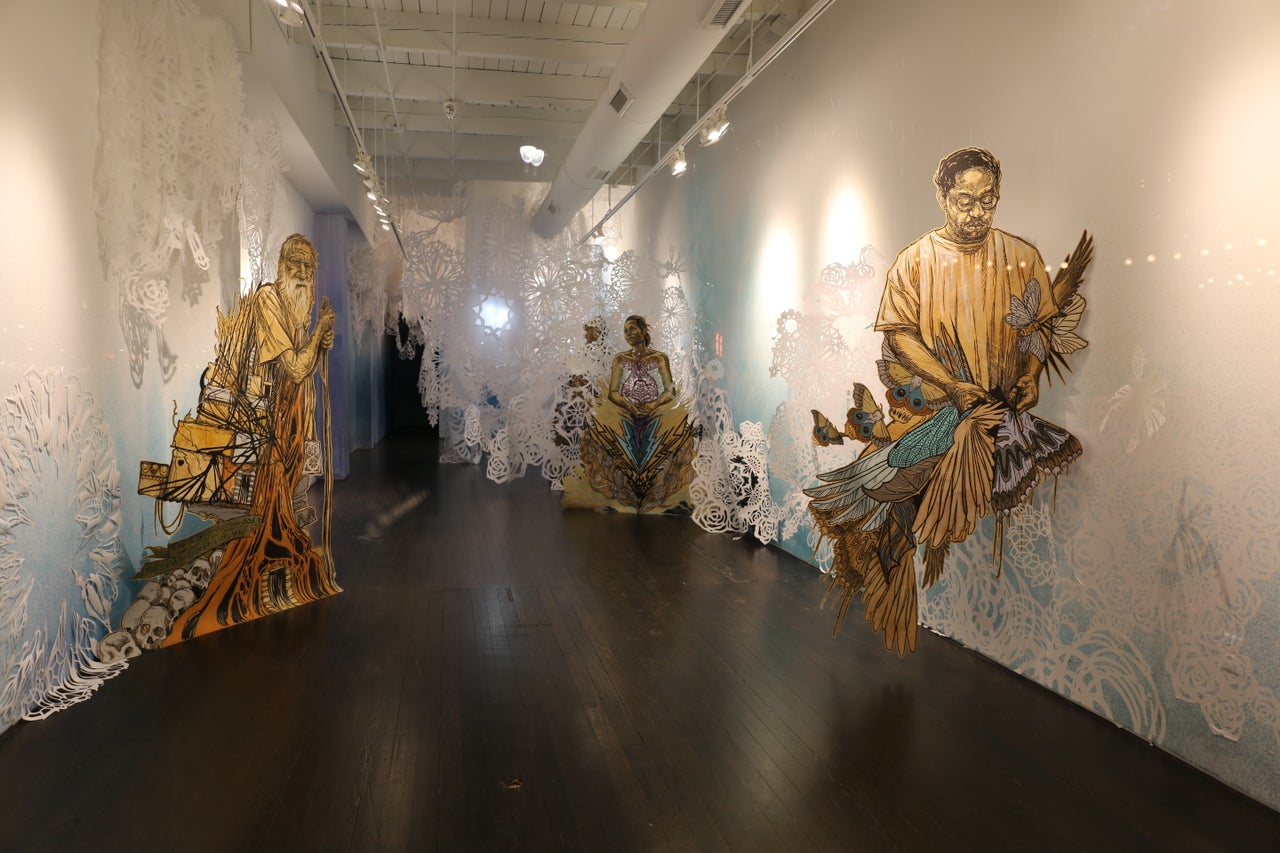
Swoon’s “The Light After” will be on view at the Library Street Collective (1260 Library Street in downtown Detroit) through Saturday, Nov. 26.
